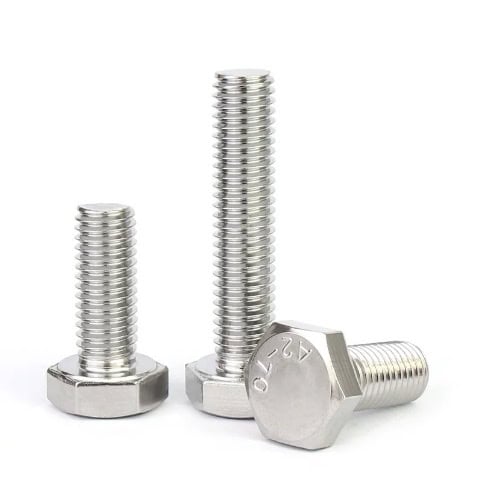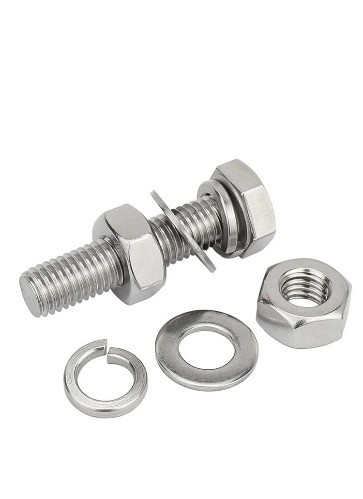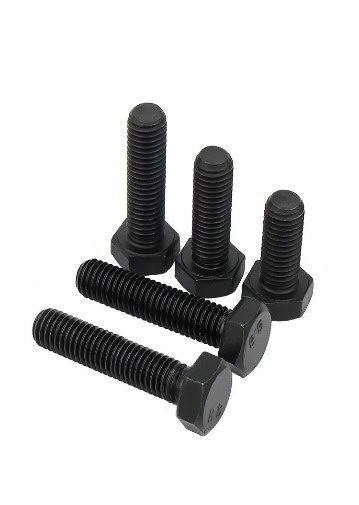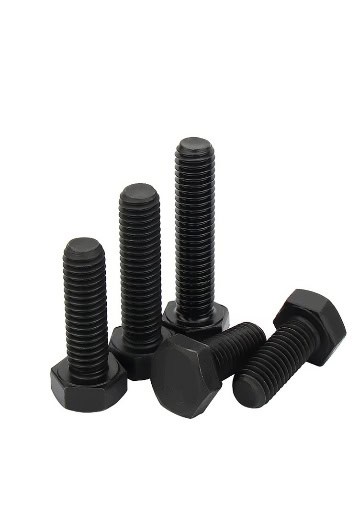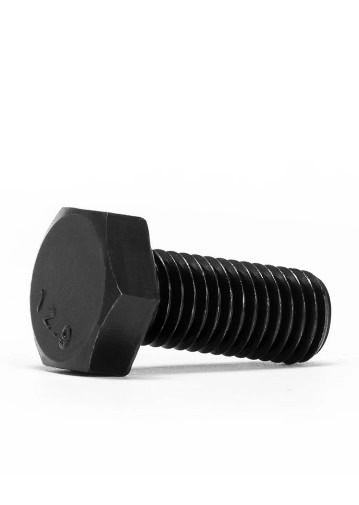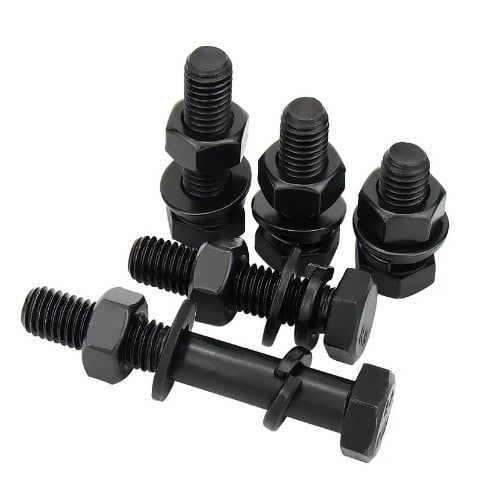Hexagonal screws
Hexagonal screws, one of the most widely used threaded fasteners in industrial and daily applications, are distinguished by their unique hexagonal head design. This design allows the screw to be efficiently and securely tightened and loosened with specific tools. Based on the head drive type, hexagonal screws can be primarily divided into two categories: hex head bolts (whose head is hexagonal, operated with an external wrench or socket wrench) and socket head cap screws (whose head has an internal hexagonal drive hole, commonly referred to as cap screws, tightened with an Allen key)
Functions and Benefits
The core function of hexagonal screws is to achieve reliable connection between components by tightly engaging with pre-tapped threaded holes or nuts. Their design philosophy is to provide a fastening solution that can withstand high loads while offering ease of operation. In the fastener industry, hexagonal screws hold a crucial position. Their excellent mechanical properties, strong clamping capability, and wide range of material and size options make them indispensable connecting elements in various applications, from heavy machinery to precision equipment. Whether facing stringent structural connection requirements or in complex assemblies with limited space, hexagonal screws provide stable, durable, and highly reliable fastening.
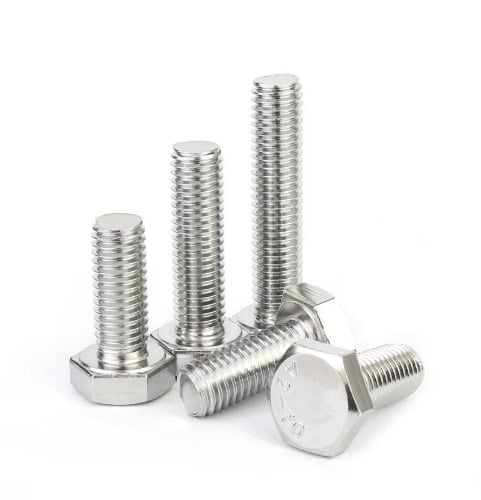
Typical Product Variants
| Variant (Standard) | Material & Grade | Size Range | Key Features / Notes |
| Metric Hex Flange Screw (DIN 6921) – Regular flange head, often serrated | Carbon steel (Class 8.8, 10.9) (Stainless steel also available) | M6–M16 (up to M20 for larger applications) | Integrated washer face; available with smooth or serrated flange. Conforms to DIN 6921 (common European standard for hex flange bolts). Suitable for automotive and machinery. |
| Metric Hex Flange Screw (JIS B1189) – Small flange head (Japanese standard) | Carbon steel (Class 10.9) | M6–M12 (typical range) | Smaller flange diameter profile per JIS B1189 standard (often used in Japanese vehicles). Usually supplied in high-tensile Grade 10.9 with coarse metric threads. Serrated versions common for automotive use. |
| Stainless Steel Flange Screw – Corrosion-resistant grade | Stainless steel A2 (304) – 70, A4 (316) – 80 (equivalent to Class 70/80) | M6–M16 | Resists rust in outdoor or marine environments. Typically with smooth, non-serrated flanges (serrations are less common on stainless due to hardness). Meets DIN/ISO standards in dimensions. Ideal for applications requiring corrosion resistance and non-magnetic properties. |
| Inch Hex Flange Bolt (SAE) – UNC/UNF threads, Grade 5/8 | Carbon steel (SAE Grade 5, Grade 8) | 1/4″–3/4″ diameter (common); lengths 1″ and up | U.S. standard flange bolts per ANSI/ASME specs (ASME B18.2.2). Supplied in inch series with UNC or UNF threads. Grade 5 and Grade 8 correspond to medium and high strength. Often used in American automotive and equipment assemblies, available in serrated or smooth bearing faces. |
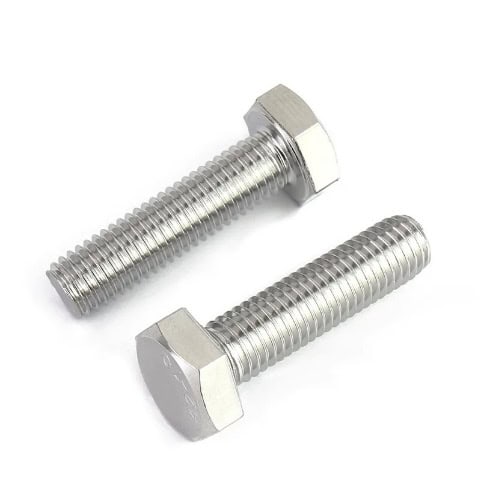
Production Process:
Precision Manufacturing
The production of hexagonal screws is a highly specialized and multi-step precision process, centered on advanced cold forming technology to ensure the final product possesses excellent mechanical properties, dimensional accuracy, and cost-effectiveness.
Material Preparation and Wire Selection
- The manufacturing of hexagonal screws begins with strict screening of raw materials. High-quality wire is the foundation for determining the final product's performance. Its chemical composition, especially carbon content, directly influences the screw's mechanical properties and the choice of subsequent heat treatment processes. For instance, for self-drilling screws that require drilling capability, special metal wire materials are typically selected to ensure sufficient strength and toughness when drilling through high-density materials. The material preparation stage also includes cleaning and lubricating the wire, preparing it for subsequent cold working.
Typical products

304 stainless steel hexagonal screws M3M4M5M6M8M10M12M16M18M20
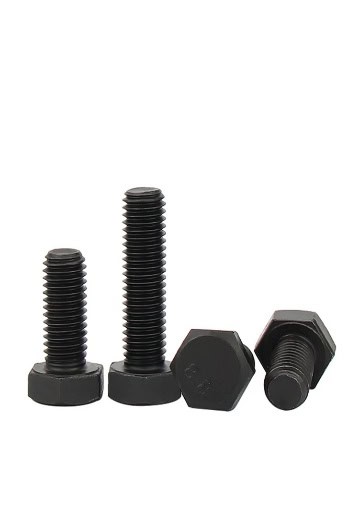
8.8 grade high strength hexagonal bolts M3M4M5M6M8M10M12M16M20M24
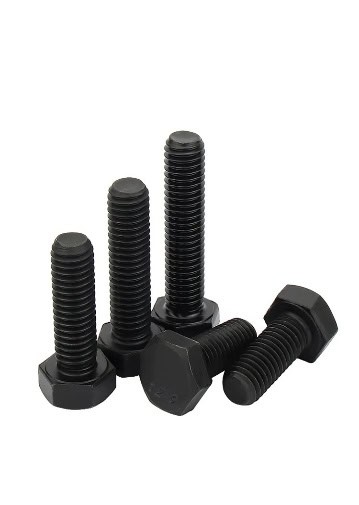
12.9 grade high strength hexagonal screws M4M5M6M8M10M12M14M16M20
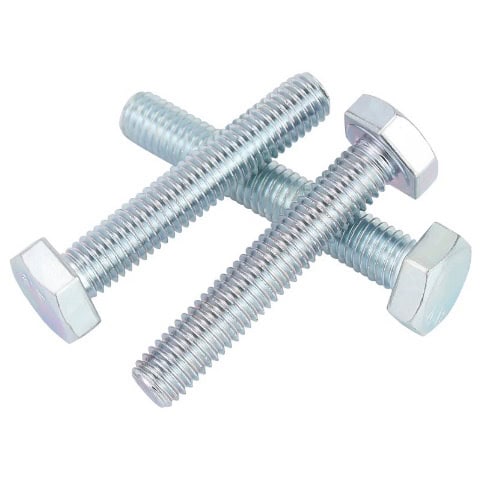
4.8 grade galvanized hexagonal high strength bolts M6M8M10M12M14M16M20
Applications and Use Cases

In the construction industry and infrastructure development, hex bolts are important structural fasteners. They are widely used in:
Heavy-duty fixing and fastening: Used to connect various structural components, such as steel structures and precast concrete elements, ensuring the overall stability and safety of buildings.
Installation, repair, and maintenance of buildings, bridges, and road infrastructure: In large-scale engineering projects, hex bolts are used to connect steel beams of bridges, secure road pavement components, and provide structural support in tunnels and elevated bridges.
Carpentry tasks: In timber construction, hex bolts are also commonly used to fix wooden frames, connect load-bearing beams, etc., providing strong fastening force.

Hexagonal screws are core fasteners in the field of mechanical manufacturing, with applications ranging from general machinery to high-precision equipment:
Assembly of mechanical components: Used to connect engine parts, transmission systems, machine tool beds, pump bodies, and various other mechanical equipment and components, ensuring secure connections between parts that can withstand vibrations and stresses during operation.
Machine tools and factory automation (FA) equipment: In precision machine tools and automated production lines, socket head cap screws are often used to fix critical components such as guide rails, sensors, and actuators due to their high strength and space efficiency.
Semiconductor manufacturing equipment: In semiconductor equipment, which requires extremely high precision and cleanliness, the application of socket head cap screws ensures precise alignment and stable operation of components.
Essential Guide to Hexagonal Screws: Types, Uses, and Specifications
Introduction to Hexagonal Screws
Hexagonal screws, also known as hex head machine screws, have a six-sided flat head for easy installation with hand tools – a key feature designed for secure grip and reliability.
They are versatile and popular for a wide range of uses, including industrial equipment and construction applications, where strength and corrosion resistance are crucial.
Available in various thread sizes and material finishes, these screws cater to diverse needs and provide a strong, reliable fastening solution.
Their use is facilitated by compatibility with tapped holes or nuts, though nuts are not always necessary, offering flexibility in application.
For easy browsing, products can be filtered by finish, use, and material, making it simpler to find the right screw for specific tasks.
Types and Classification
Hex head machine screws are a common type of hexagonal screw, featuring a six-sided flat head designed for easy use with hand tools.
They are ideal for industrial equipment and construction, ensuring a secure grip after tightening, and are available in various head styles to suit different installation techniques and surface profiles.
Other types include hex washer head tapping screws, which are durable fasteners designed for secure metal-to-metal or metal-to-wood connections, and are featured for their reliability and ease of use.
These screws can be categorized based on their thread size, material, and finish, allowing for a more targeted search and selection process.
When browsing through categories, it’s essential to consider the designed use and application of each screw type to ensure the best fit for the project.
Applications and Uses
Hexagonal screws are suitable for diverse uses, including machinery, automotive, and assembly lines, where their strength and reliability are valued.
They provide strong, reliable fastening for industrial applications and are designed to resist corrosion and wear, making them a preferred choice for demanding environments.
In construction, they are used for their ability to provide a secure grip, ideal for ensuring the stability and safety of structures.
These screws can be used with tapped holes or nuts, offering versatility in their application and making them a convenient option for various projects.
Whether adding items to a cart for a small DIY project or sourcing materials for a large-scale construction site, hexagonal screws are a fundamental component due to their wide range of applications and uses.
Specifications and Standards
Thread size is a critical factor in selecting compatible fasteners, as it ensures proper fit and function in assemblies, and directly impacts the strength and durability of the connection.
Material finish is also essential for strength and corrosion resistance, with various options available to suit different environmental conditions and application requirements.
Specifications may include standards for load and torque, which are vital for ensuring the screw can withstand the stresses and forces it will be subjected to in its intended use.
Understanding these specifications is crucial for making informed decisions when selecting hexagonal screws for a project, ensuring that the chosen screws meet all necessary standards and requirements.
By considering these factors, users can find the perfect fit and finish for their needs, whether through filters or by directly browsing through product categories.
Benefits and Considerations
Hexagonal screws offer several benefits, including easy tightening and loosening with standard tools, and their availability in multiple materials and finishes to resist corrosion and wear.
They are designed to provide a secure grip, making them ideal for applications where reliability is paramount, and their versatility in use and application makes them a preferred choice for many industries.
However, considerations such as thread size, material finish, and compatibility with tapped holes or nuts are essential for ensuring the screw functions as intended and meets the project’s requirements.
The use of nuts can add an extra layer of security and stability, though they are not always necessary, providing flexibility in the design and application of hexagonal screws.
When evaluating these considerations, it’s beneficial to think about the long-term use and maintenance of the screws, as well as any potential challenges or limitations they may present in different contexts.
Selection and Purchase Guidelines
When selecting hexagonal screws, evaluate thread size and material finish for strength and corrosion resistance, ensuring the screws can withstand the environmental and operational conditions of their intended use.
Consider head style based on installation method and surface requirements, as different applications may demand specific types of screws for optimal performance and ease of use.
Assess screw length and diameter to ensure proper fit and performance, and check compatibility with tapped holes or nuts for the specific application to avoid any potential issues or incompatibilities.
Utilize detailed product information and expert resources to support purchasing decisions, and benefit from comprehensive catalogs that offer a wide selection of hexagonal screws and related fasteners under one roof.
By following these guidelines and considering factors such as finish, use, and material, buyers can make informed decisions and find the best products for their needs, whether through online browsing or consulting with experts.
Installation and Maintenance Best Practices
Proper installation is key to ensuring the longevity and performance of hexagonal screws, with techniques varying based on the type of screw and the material it is being fastened to.
Maintenance involves regular inspection for signs of wear or corrosion, and addressing these issues promptly to prevent them from becoming more significant problems.
The use of appropriate tools and following the designed installation and maintenance guidelines can significantly extend the life of the screws and ensure they continue to perform reliably.
In cases where screws are exposed to harsh environments, additional protective measures may be necessary to maintain their integrity and functionality.
By adhering to best practices and considering the specific use and application of the screws, users can optimize their performance and extend their lifespan, reducing the need for premature replacement and minimizing downtime.
Contact DingLong
Frequently Asked Questions (FAQ)
Q: What materials are available for hexagonal screws?
A: Hexagonal screws are available in a variety of materials including carbon steel, alloy steel, and stainless steel. For high-strength applications, alloy steel screws are commonly used, while stainless steel is preferred for corrosion resistance in harsh environments such as marine or outdoor settings.
Q: What is the minimum order quantity (MOQ) for hexagonal screws?
A: The MOQ varies depending on the supplier and whether the screws are standard or custom-made. Standard sizes often have a low MOQ, while custom sizes or finishes may require larger orders (e.g., 500–1000 pieces).
Q: What is the typical lead time for hexagonal screws?
A: For standard screws, the lead time is generally 1–2 weeks, depending on availability and quantity. Custom-made screws or special finishes may take longer, ranging from 4 to 6 weeks for production and delivery.
Q: Can hexagonal screws be used in high-temperature applications?
A: Yes, alloy steel hexagonal screws with high tensile strength can withstand high temperatures. For extremely high-temperature environments, titanium or stainless steel variants are recommended for their excellent heat resistance.
Q: How are hexagonal screws packaged for shipping?
A: Hexagonal screws are typically packaged in bulk cartons or bags, with smaller quantities per box or bag depending on the size and grade of the screws. For international shipping, they are often packed in sturdy cartons to avoid damage during transit.

